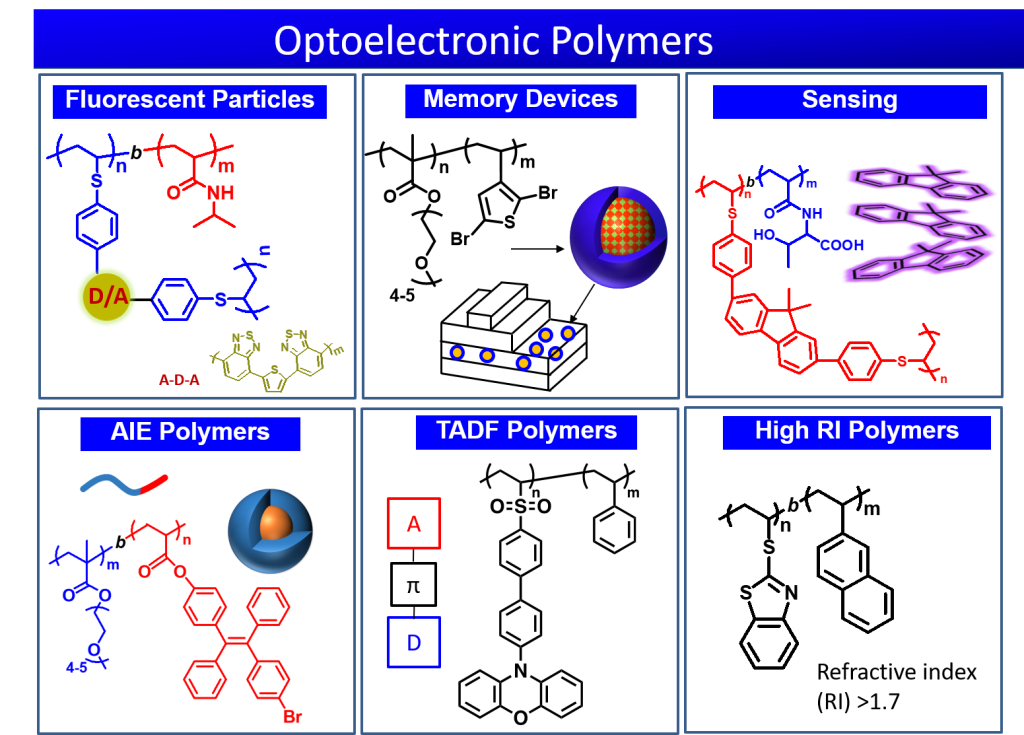The unique electronic and photonic functions of optoelectronic polymers can be tuned by controlling their chemical structure, the stacking and location of the chromophore moiety, molecular weight and polydispersity, sequence and conformation, and polymer architecture. We have extensively investigated the controlled radical polymerization of various N-vinyl monomers including N-vinylcarbazole, N-vinylindole derivatives, N-vinylphthalimide, N-vinyltriazole, and N-vinylazolium salts. Recently, we developed an efficient strategy for the synthesis of cross-linked core–shell nanoparticles (NPs) using self-assembled block copolymers and through site-selective coupling reactions. Using this approach, various optoelectronic functions, such as fluorescent, electron-deficient (acceptor-type), and donor-acceptor units, can be incorporated into the core of the core-shell NPs. These polymers and NPs with well-defined and ordered structures can facilitate the development of tunable materials with unique properties for a wide range of applications such as in organic memory devices, luminescent materials, and sensing materials.
Thiophene, thiazole, thiadiazole, and benzothiazole are sulfur-containing aromatic heterocyclic compounds, in which the heteroatoms participate in π conjugation. We are interested in investigating the potential optoelectronic applications of sulfur-containing polymers and block copolymers, such as for the development of metal-complexed polymers with tunable color and high-refractive-index polymers with high transparency as well as in the fabrication of UV-induced nanoimprinting materials.

